7 Best Ideas For Crossing Water
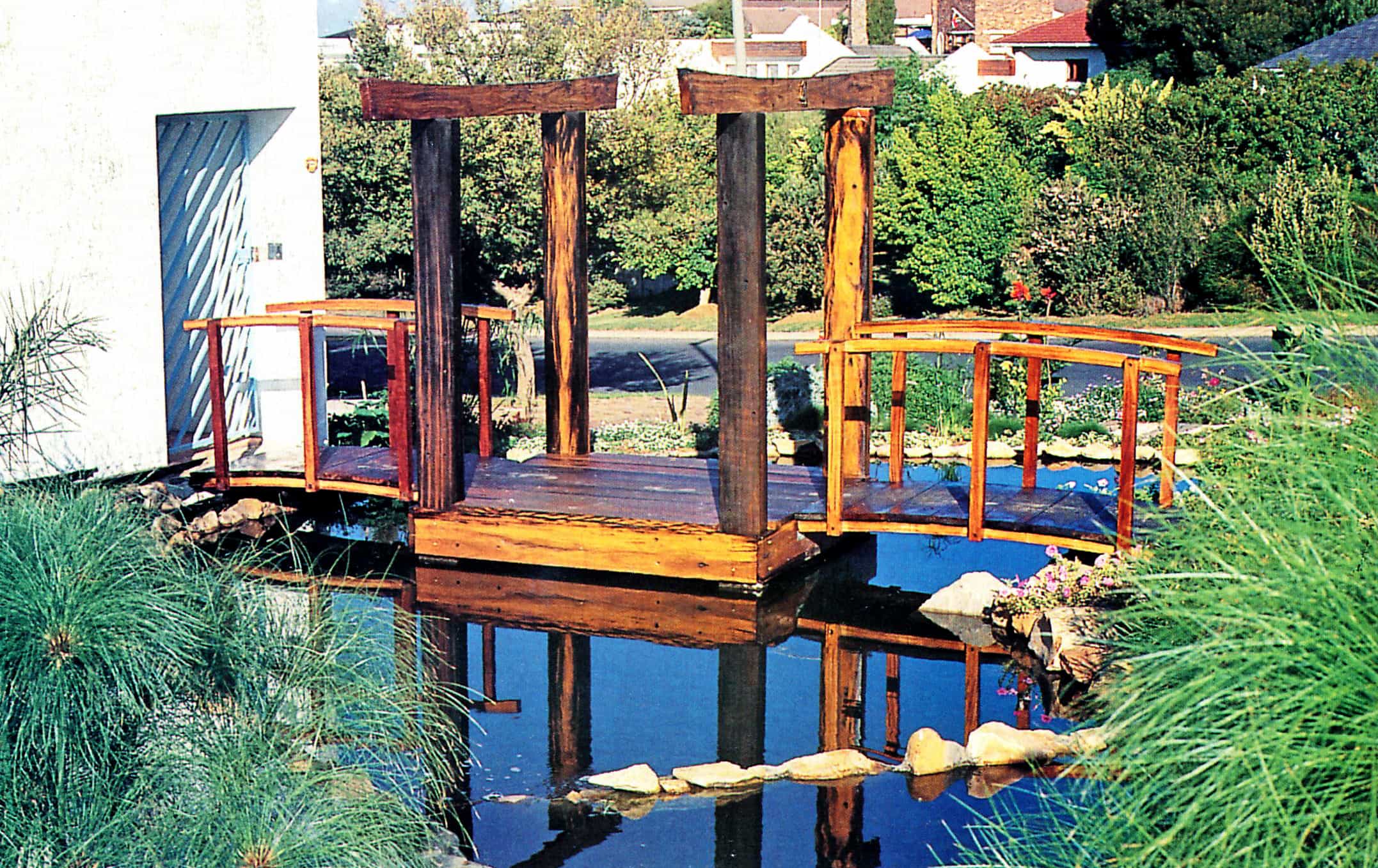
The Best Bridges For Crossing Water
Bridges for crossing water and stepping stones offer us the opportunity for crossing water, in both aesthetic and practical ways. They also enable us to gain closer access to the water and to admire and enjoy it from a vantage point other than along its shores. Carefully planned and properly designed, these features will add interest and character to the area in which they are located.
You may feel that a suitable place for a bridge or walkway is only the larger pond, natural river, stream, or water feature incorporating an island. This is not the case at all. Just two or three stepping stones leading through a modest pool or stream, or a little arched bridge across a koi pond will encourage you to approach the water and enjoy its pleasures. It may even provide that finishing touch.
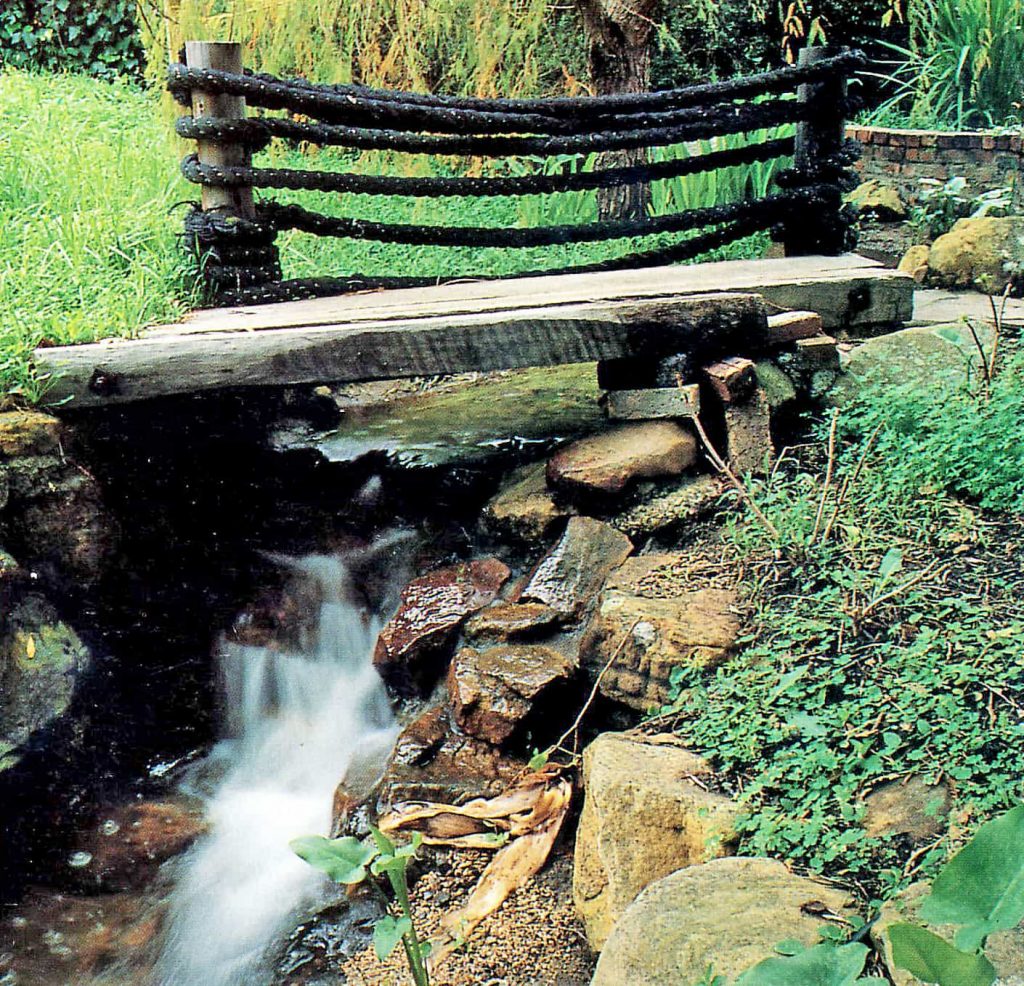
Any existing style or design theme in the garden should determine the method used as a bridge for crossing water water. Stepping stones can have an Oriental feel about them, especially when organized in the traditional Japanese way. A simple, flat, wooden walkway extending across water will suit most informal layouts. A single log or railway sleeper is effective as a crossing medium where you do not want to detract from the natural effect of a waterway or stream. Conversely, an elaborate, arched bridge will be a feature in itself.
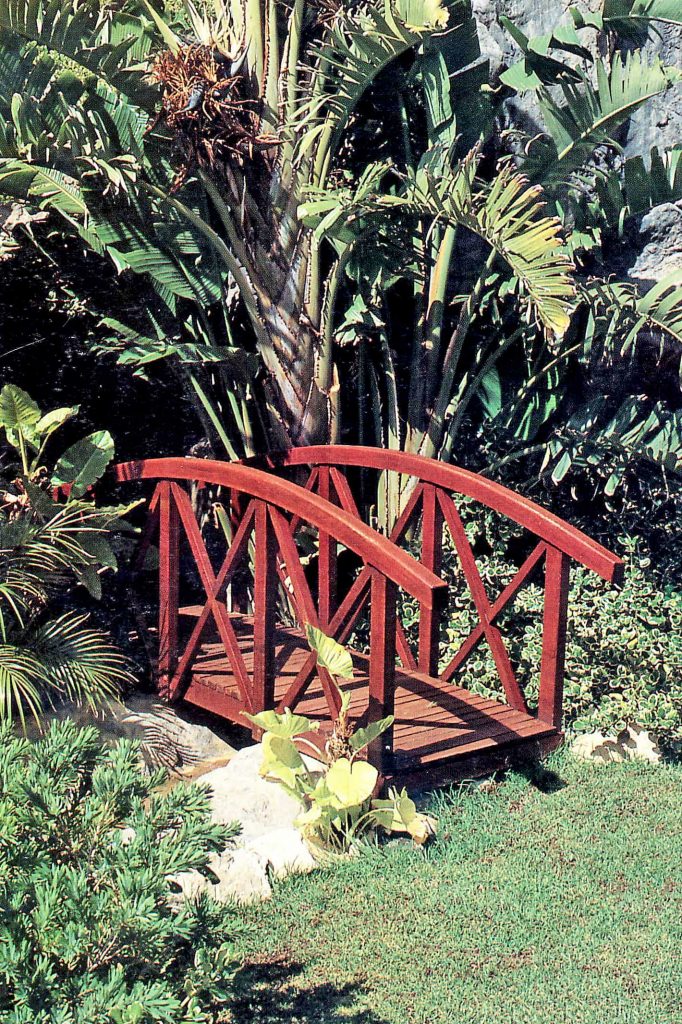
BRIDGES
When you include a bridge in your garden design, make sure that the type of structure you choose complements not only the water feature it will cross, but the surrounding environment as well. It should also be in proportion to the rest of the garden. It is therefore important to consider its dimensions carefully.
Height above the water is only a factor when boats need to pass under a bridge A slightly raised design however will allow an enticing glimpse of the garden, as well as the water it crosses. While the simplest designs can be most effective, the inclusion of a couple of steps at either end will add both height and interest.
The width of the bridge will obviously determine the number of people who can use it at any one time. Relatively few contemporary gardens can accommodate a structure much broader than 900 mm (3 ft), the bridge featured in our step-by-step project is only 600 mm (2 ft) wide.
When estimating how long your bridge should be, it is essential that the structure crosses the water and also extends over solid ground. This is a visually pleasing and practical design approach, particularly where bank erosion could occur in later years and make the structure unsafe.
If railings are included, the basic design of your structure will probably determine their characteristics. Some Oriental bridges feature quite elaborate lacquered wooden railings and lattice-work, although many simple Japanese bridges, built from stone or with wooden planks, traditionally have no railings at all. Structures found in rural settings are more likely to utilize straightforward timber handrails or even thick rope affixed to stout poles.
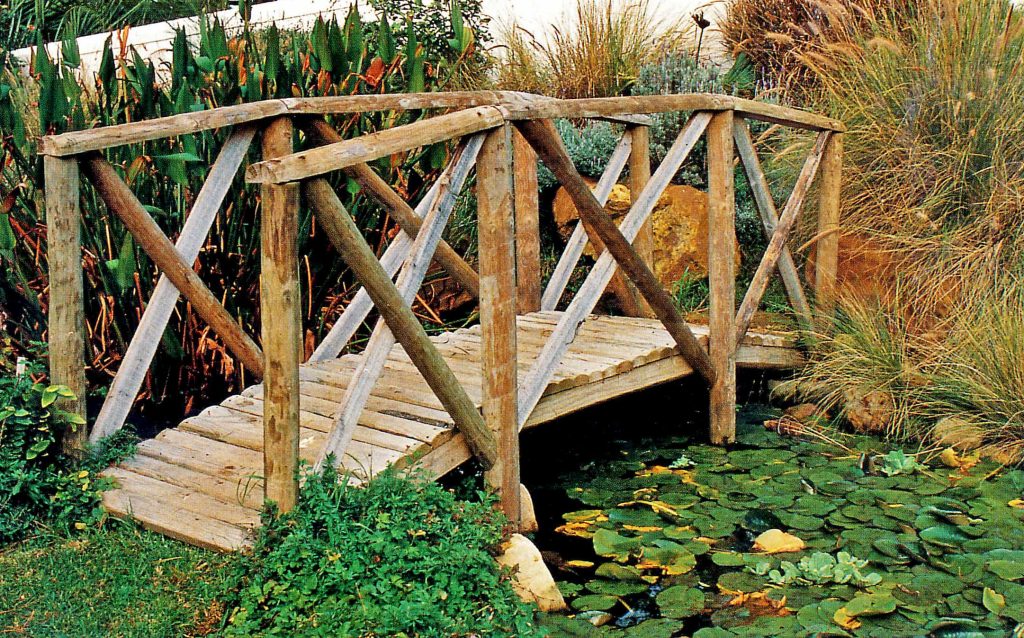
Even where handrails are not necessary for practical reasons, you may opt to incorporate them as a design feature, or to make the bridge look more substantial.
STEPPING STONES
Where a bridge is likely to appear intrusive, stepping stones are an obvious alternative for crossing water. They are modest in size, relatively easy to construct or position, and can be used over a small or large expanse of water. Furthermore, stepping stones are an effective addition to both formal and informal water features, fitting whichever style you prefer.
Flat-topped rocks make very effective stepping stones and they should be well anchored in the soil, or even concreted into place for safety’s sake. They fit the informal style well and may be used to cross streams, ponds or even a bog garden Choose large rocks and space them evenly for ease of use.
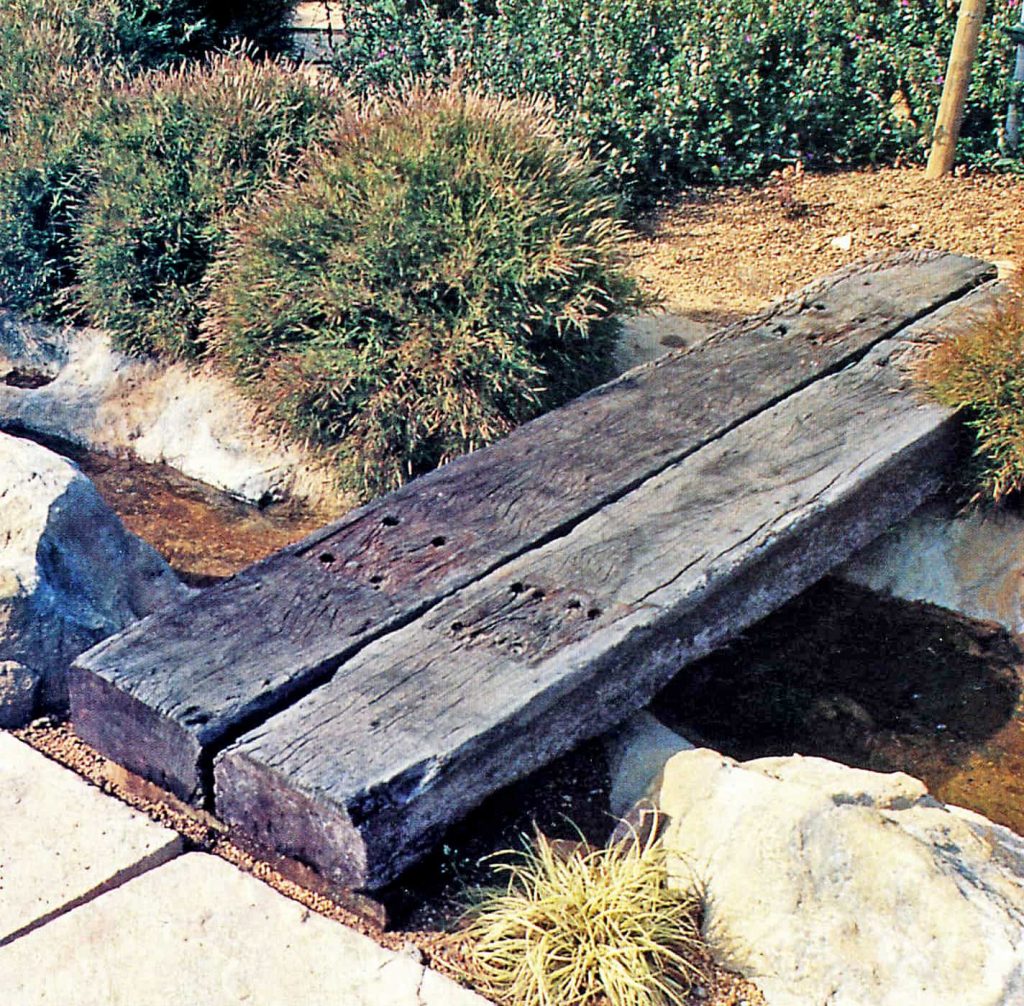
If natural materials are scarce, simulated stone slabs may be set on top of brick piers to create a similar impression. This can be particularly effective if the similar looking material has been used around the edge of the pond
Obviously man-made stepping stones, comprising tiles or slabs supported on plastered brick piers are more suited to formal water features. If tiles are used, avoid those with a glazed surface for safety reasons.
The materials you choose should be resistant to constant immersion in water and to frost if you live in a cold climate. Remember that stepping stones are easier to construct if the water feature is reasonably shallow. They should be built, or set in place, before the pond is filled with water which means that you may have to drain the water from an established pool before you begin.
LOCATION
The most obvious place to position a bridge or stepping stones is where the contours of the pool suggest a natural crossing point. However, you may find it less visually intrusive to bridge a pond at one end, perhaps where a natural bog garden crosses it, rather than obstruct the view of the water
An existing pathway leading to the water might suggest an obvious place to cross. Or, construct a bridge where you choose and extend an established path along the bank of the water feature to meet it.
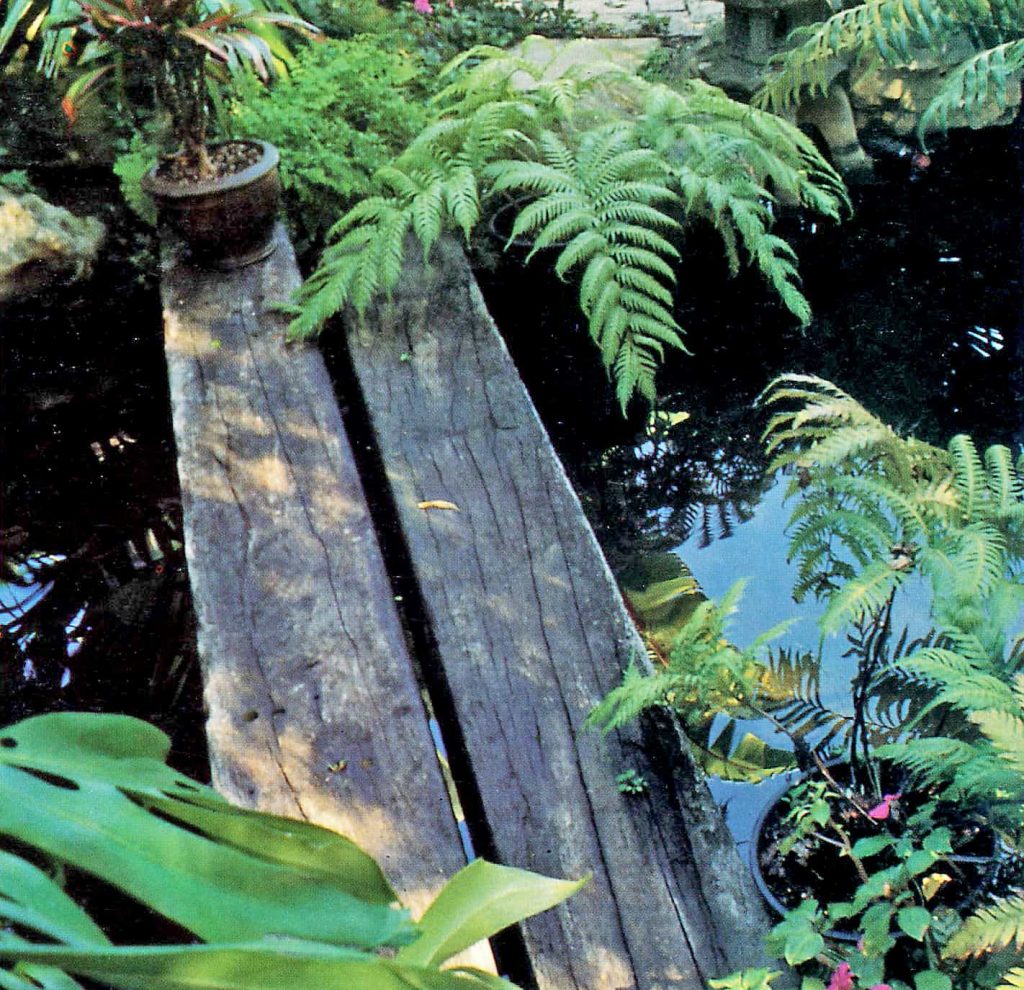
Although it is not essential when crossing water for a bridge or stepping stones to lead anywhere at all, there is little point in including them in your design if they do not encourage people to cross, or at least draw them closer to the water feature
MATERIALS
Choice of materials will relate primarily to safety, although budget, finish and effect will also be important factors.
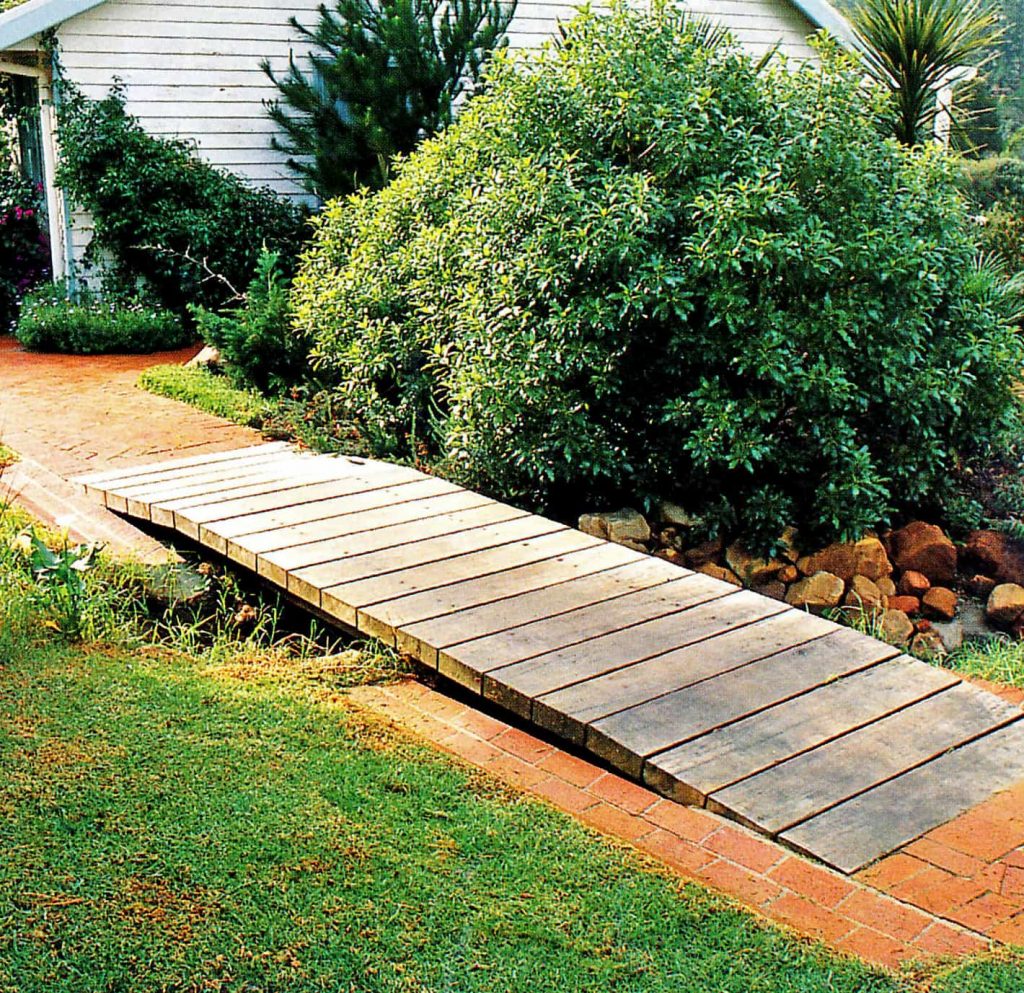
Timber is a common choice for all types of bridges, but general should be avoided when it comes to stepping stones. Logs and sliced tree trunks set in the water will quickly become mossy and slippery, creating a dangerous walkway.
Concrete is a useful material, which may be cast in situ, and used in conjunction with other finishes such as stone or other precast products.
Although stone has been used to construct bridges for many centuries, the skills required, as well as the scarcity of natural stone in many areas, make this a much less usual option for the average garden. Large, flat-topped stones may be used successfully as stepping stones.
SAFETY
While water in the garden is a potential hazard, especially for young children, a badly-built bridge or unstable stepping stones will exacerbate this danger. It is vital that all bridges are sturdy and properly built and that anything used for crossing water is as non-slip as possible.
Of course, handrails are recommended in any situation which may be potentially dangerous: for instance, where a high bridge spans a river or where children and elderly people are likely to be at risk.
Stepping stones below the water level, will tend to attract algae and become slippery, creating a crossing as dangerous as a bridge without handrails. It is therefore extremely important to have a reasonably rough surface underfoot.




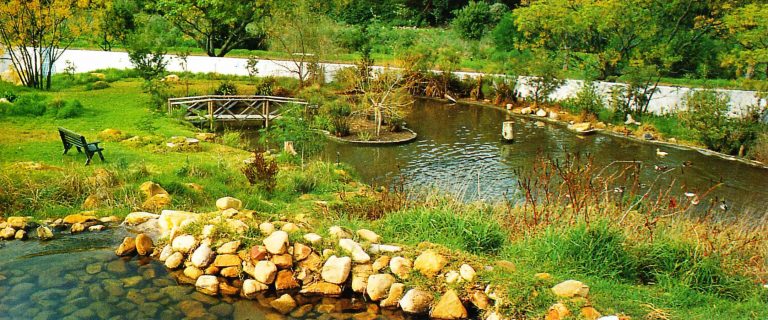


3 Comments